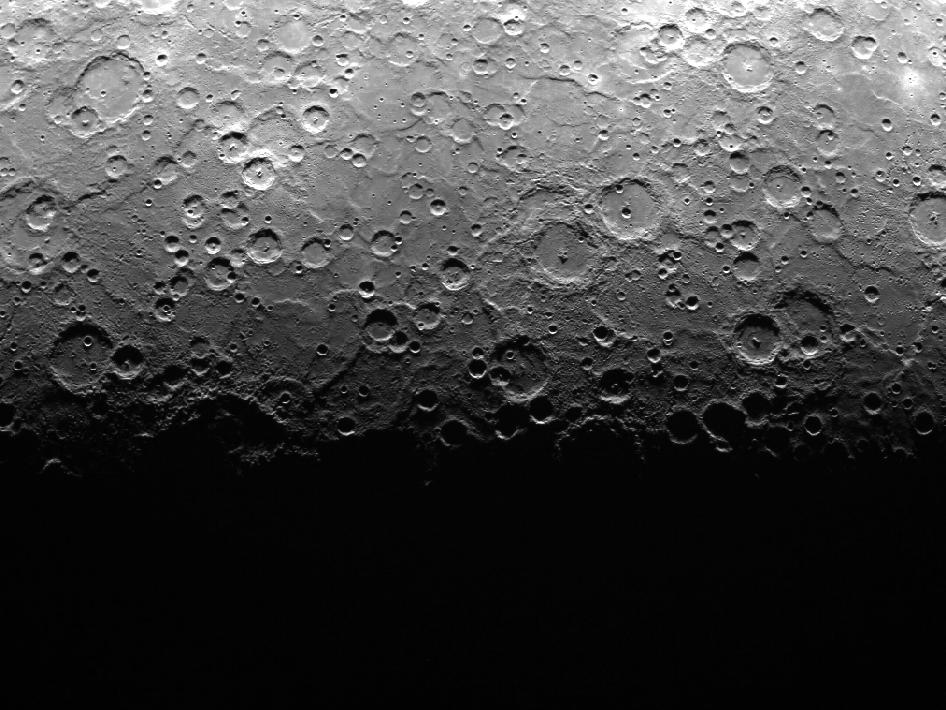 | |
|  |
|
|
| |
| Another view, and why Mars is tiny | Jun 01, 2011 3:07 AM PDT | url |
| | |
Added 1 new A* page:Here's a cleaned-up and then grayed-up full-size version of the storyboard for today's A* page (a tiny, cropped, pre-cleaned version can be seen back in this news post):

I thought I was going to draw today's final art from that same viewing angle, but I noticed that it's a little tough to see what she's looking at from there, and in something of a change from recent pages, I wanted to be relatively unambiguous about the direction of her gaze this time; also, the composition feels a little too cramped vertically, at least when the 75 vertical pixels the subtitle bar covers at the bottom are taken away. But in this rather taller format, I think it's not too bad.
For future reference, this version can be found in the episode 13 gallery (the gallery pages are accessible from the "episodes" page in the site's top menu).
~~~~~~~~
Yesterday was full of talk of Martian meteorites, and it just so happens I recently came across another article featuring them, for a different reason: this BBC article discusses a new study that looked at 44 meteorite pieces from Mars (I *think*--the crucial language is a little scattered), examining their concentrations of thorium, a radioactive element, and hafnium, a very stable element--possibly to compare their ratio, and the less thorium to hafnium there was, the older the rock was, since thorium decays over time? Anyway, the conclusion from however the measurements were used is that Mars took about 2 to 3 million years to form--as opposed to Earth, which "is thought to have taken tens of millions of years to grow to its current size" (note that these time spans cover only the actual accumulation of mass, not the total age of the planet; Earth is thought to be about 4.5 billion years old in total).
This relatively short formation period for Mars could explain why Mars is so tiny; simulations of Solar System formation show that, based on its position as the planet just beyond Earth's orbit, Mars *should* be close to Earth's size, but in fact it's only 1/10th of the size of Earth.
It is thought that when the primary phase of planetary formation ended--circa 3 to 10 million years after the birth of the Solar System, when the Sun's solar wind blew the remaining loose gas and dust they'd formed from away--there were "50–100 Moon- to Mars-sized planetary embryos" winging around the young system, and these proceeded to smoosh together and add the remaining mass to the inner planets. Since we noticed yesterday that the "Earth was hit by a Mars-sized planetary embryo, making the Moon" theory is looking increasingly shaky, we have to be a little skeptical of these two planetary articles I've linked today, since both still hold up that theory as the best one going, but it *is* interesting to see a mention of the theory that one such object hit Mercury, blowing off its outer shell--Wikipedia's Mercury article doesn't mention it at all; it does talk about how its iron core is very large relative to its total size, so maybe that's where the theory comes from.
Anyway, the thinking in this BBC Mars article is that Mars really is one of those old "planetary embryos," and didn't grow to its expected size because it just didn't happen to run into any more of them, so it had no more mass coming in to build it up. The conclusion in the article, quoted from a British astrophysicist, is that this lack of collisions was "just luck," which isn't very satisfying--so why not speculate a bit, since I'm not a scientist? :P I can't help but notice that Mars is situated next to the mammoth Jupiter, which even in our short observation history has been seen to cause disruptions to small bodies from Mars outward; so it isn't hard to imagine that the presence of Jupiter could have diverted all that supposed early embryo planet activity away from Mars.
And because it's always nice to have some sort of illustration with a bunch of words, here's a nice view of Mercury's supposedly embryo-denuded south pole from 10,000 km up, taken just two months ago by the MESSENGER spacecraft, which earlier this year became the first craft to orbit that innermost planet (I have a lot more on MESSENGER, and more pictures of Mercury, in A* posts from earlier this year, here and here, when it was approaching and going into orbit):

image by NASA (source)
(There aren't too many yet, but MESSENGER is in full operation now and snapping away, so there are more photos from it in NASA's MESSENGER gallery.)
|
·····
|
|
|
